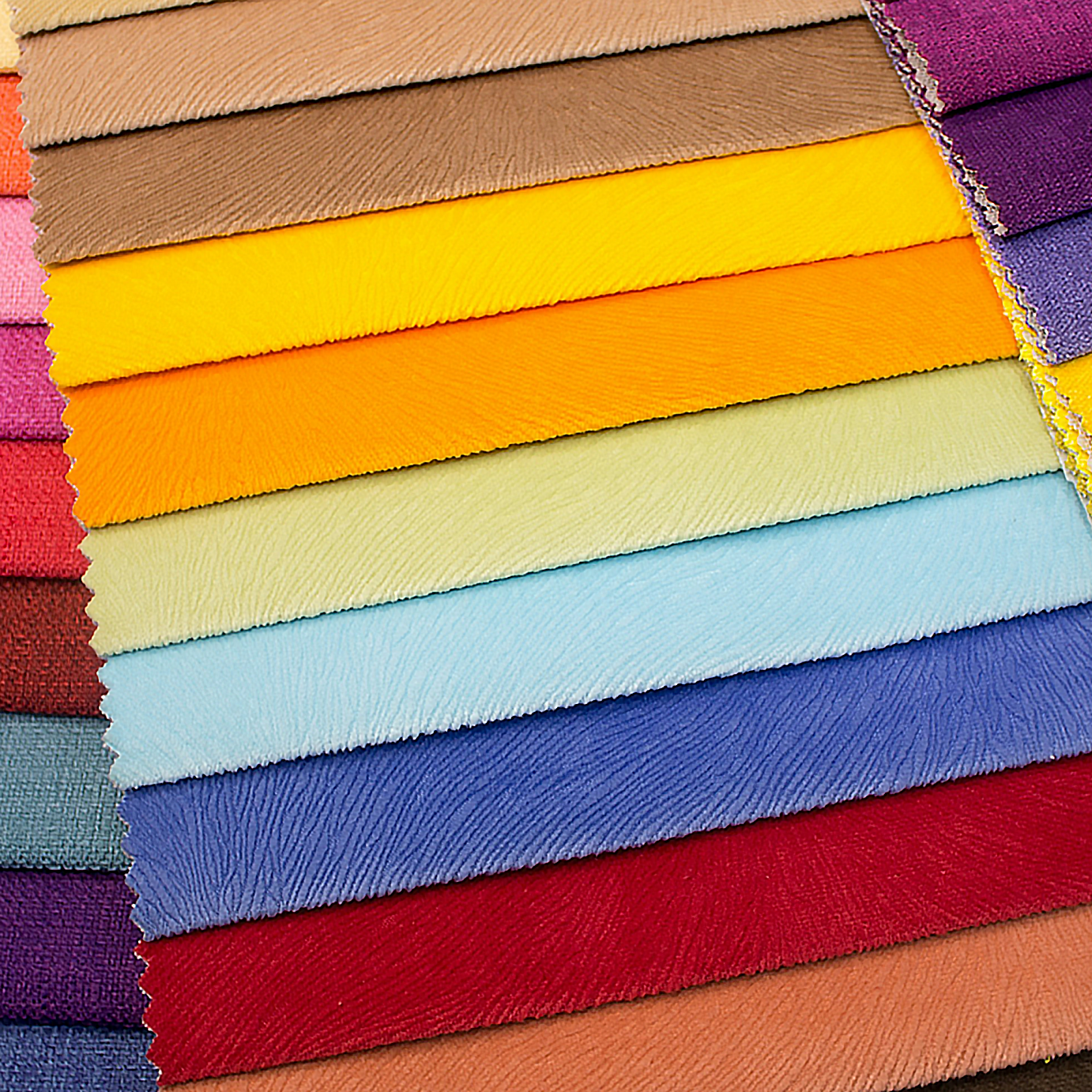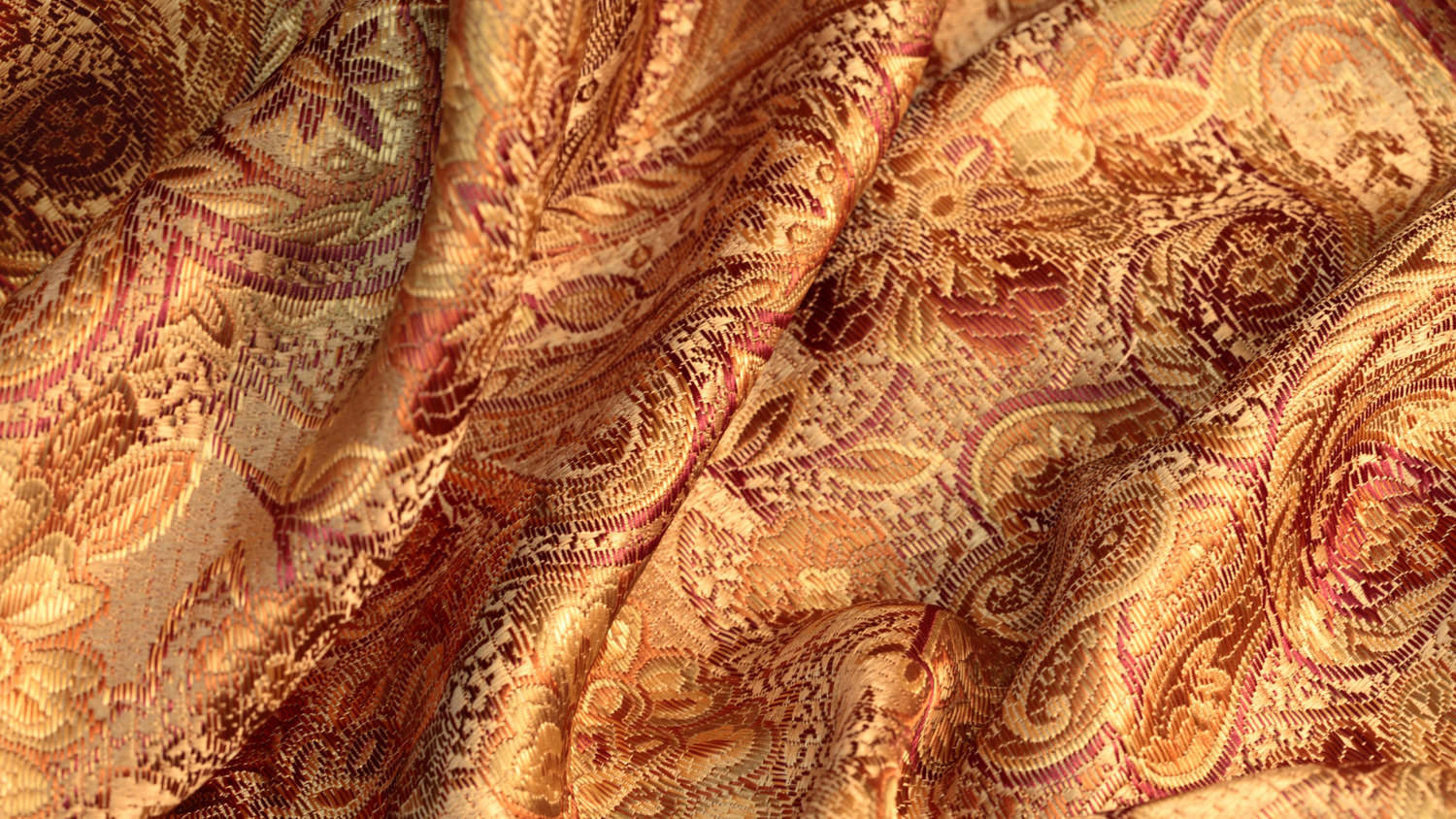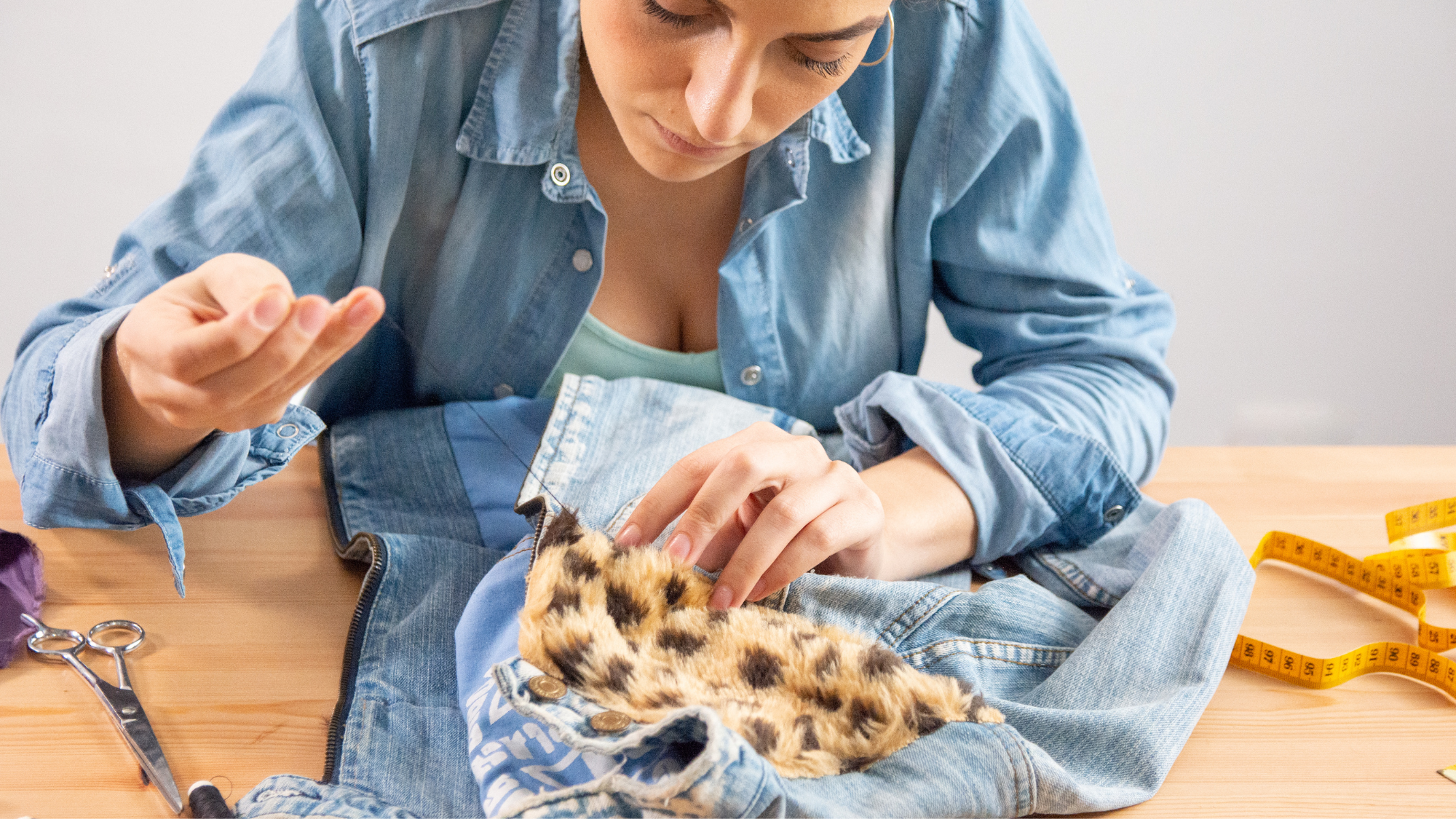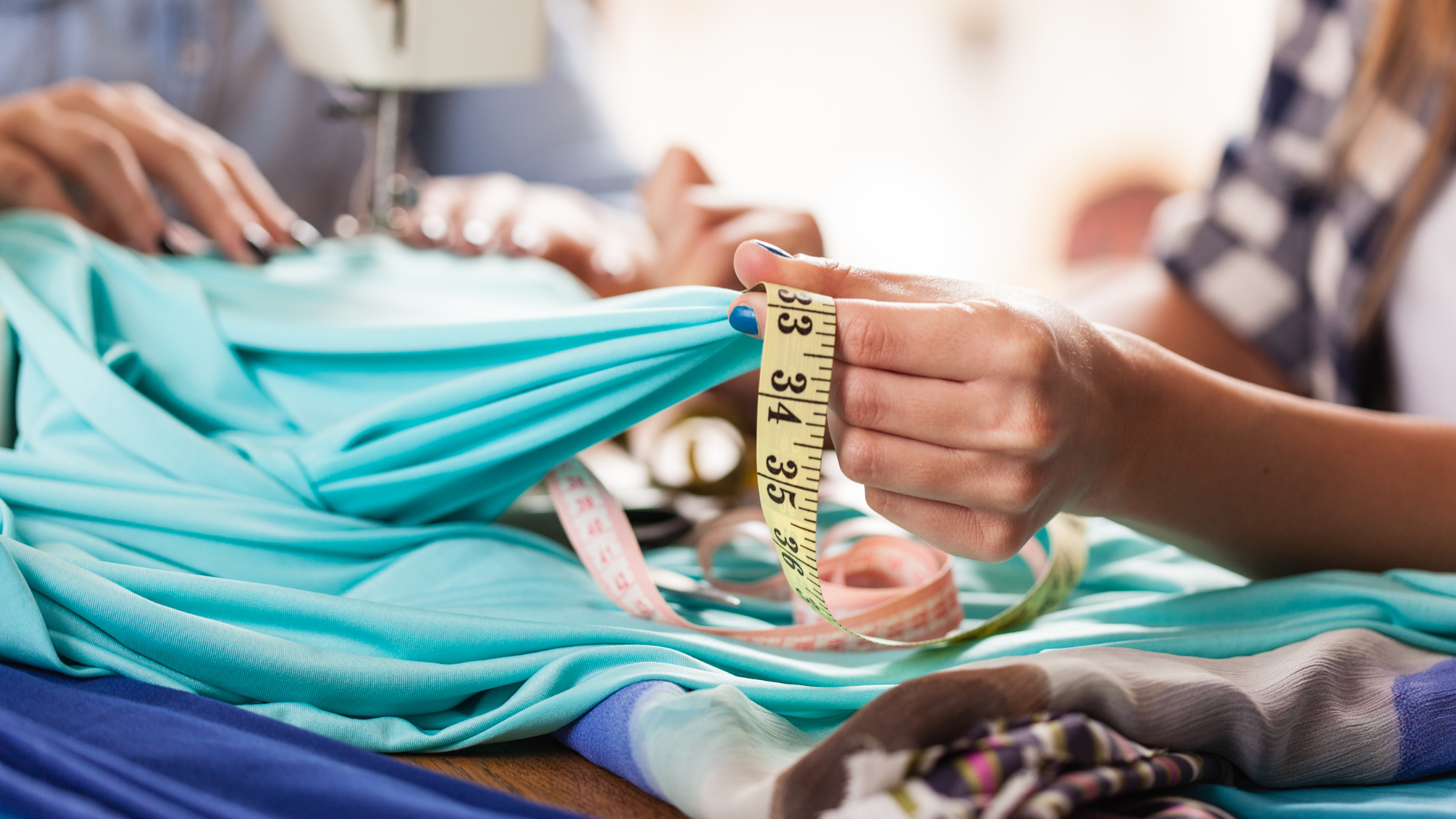
Brocade fabric is a fantastic way to make a statement with any garment this time of year, with its intricate patterns and detailed designs. But what exactly is brocade fabric, and how do you work with it? Find out more in our Zelouf guide to brocade fabric.
What is brocade fabric?
Brocade is a luxurious and ornate woven fabric that is characterized by its raised, intricate patterns or designs. It can be made from silk, or crafted from synthetic fibers or a blend of materials. Brocade is known for its rich and textured appearance, often featuring floral, geometric, or abstract motifs.
Key characteristics of brocade fabric include:
- Raised Patterns: Brocade fabric is woven with raised patterns, giving it a three-dimensional texture. These patterns can be quite elaborate and are typically created using extra weft threads or metallic yarns.
- Lustrous Finish: Brocade has a distinct sheen and luster, especially when made from silk. This makes it a popular choice for formal and ceremonial garments.
- Variety of Designs: Brocade comes in a wide range of designs and patterns, making it suitable for various applications, from clothing to home decor.
- Rich and Elegant: Due to its intricate patterns and luxurious appearance, brocade is often associated with elegance and is used in special occasion wear like wedding dresses, evening gowns, and traditional attire.
- Stiffness: Brocade can be somewhat stiff compared to other fabrics, which gives it structure and makes it suitable for structured garments like jackets and corsets.
- Versatile: While brocade is often used in formal and special occasion clothing, it can also be found in everyday fashion, accessories, and interior design, depending on the design and color.
- Historical Significance: Brocade has a long history and has been used in various cultures throughout the ages, often associated with royalty and nobility.
Brocade fabric is used not only in clothing but also in upholstery, curtains, tablecloths, and other home decor items to add a touch of opulence to interiors. Its versatility and timeless appeal make it a popular choice for those looking to create garments and decor with a touch of elegance and sophistication.

Zelouf Floral Brocade Fabric With Metallic in Black/Gold
What is the difference between brocade and jacquard fabric?
Brocade and jacquard are two distinct types of woven fabrics, each with its unique characteristics, though they share some similarities. Here are the key differences between brocade and jacquard fabric:
- Pattern Creation:
- Brocade: Brocade is known for its raised, intricate patterns that are woven into the fabric itself. These patterns are often created using extra weft threads or metallic yarns, resulting in a three-dimensional texture. Brocade patterns tend to be highly ornate and may include floral, geometric, or abstract designs.
- Jacquard: Jacquard refers to a weaving technique rather than a specific pattern. Jacquard fabrics are woven on a special loom called a Jacquard loom, which allows for the creation of intricate and complex patterns. These patterns can be created using various types of threads, including the warp and weft threads themselves. Jacquard patterns can be raised or flat, depending on the desired design.
- Texture:
- Brocade: Brocade fabric is known for its distinct raised texture, which is a result of the woven patterns. The raised portions of the fabric give it a tactile quality and a luxurious feel.
- Jacquard: Jacquard fabrics can have raised or flat patterns, depending on the specific design and weaving technique used. They may have a more subtle texture compared to the pronounced raised patterns of brocade.
- Materials:
- Brocade: Brocade fabrics are traditionally made from silk, but they can also be crafted from other natural fibers like cotton or synthetic materials. Metallic threads are often incorporated into brocade for added richness.
- Jacquard: Jacquard fabrics can be made from a wide range of materials, including silk, cotton, wool, synthetic fibers, and blends. The choice of materials can vary depending on the intended use and design.
- Applications:
- Brocade: Brocade is often associated with formal and ceremonial clothing, such as wedding dresses, evening gowns, and traditional attire. It is also used for decorative items like upholstery, curtains, and tablecloths.
- Jacquard: Jacquard fabrics are versatile and used in a wide range of applications, including clothing, upholstery, draperies, and home decor. They can be found in both formal and everyday settings.
- Complexity of Patterns:
- Brocade: Brocade patterns tend to be highly ornate and complex, often featuring intricate details and motifs. They are designed to create a visually stunning and opulent effect.
- Jacquard: Jacquard patterns can vary in complexity, from simple designs to highly detailed motifs. The versatility of the Jacquard weaving technique allows for a wide range of pattern possibilities.
While both brocade and jacquard fabrics involve intricate patterns and are used for a variety of applications, brocade is known for its raised, ornate patterns and distinct texture, while jacquard refers to a weaving technique that can produce a range of patterns, including those with raised or flat designs. The choice between brocade and jacquard depends on the desired aesthetic and tactile qualities for a particular project.

Zelouf Wuthering Heights Lurex Jacquard Fabric in Grey Mystery
Can brocade be washed?
Caring for brocade fabric properly is essential to maintain its appearance and integrity over time. Brocade fabric, often used for formal and special occasion garments, requires gentle handling and specific care to prevent damage or shrinkage.
Always read the care label, and avoid washing if possible. Washing can damage the delicate fibers, so try spot cleaning where you can. If all else fails, take your brocade to a professional dry cleaner.
Tips for sewing brocade fabric
Sewing brocade fabric can be a rewarding experience, but it also requires careful handling due to its delicate nature and raised patterns. Here are some tips for successfully sewing brocade fabric:
- Use the Right Needle: Choose a fine, sharp needle, such as a universal or microtex needle, when sewing brocade. These needles are designed to minimize damage to delicate fabrics and help prevent snagging.
- Select Quality Thread: Use high-quality thread that matches the color of your brocade fabric. Silk or polyester thread is often a good choice. Weaker or low-quality thread may break more easily and can lead to stitching issues.
- Practice on Scrap Fabric: Before sewing your actual project, practice sewing on a scrap piece of brocade fabric. This will allow you to familiarize yourself with the fabric's behavior and test your machine's settings.
- Prewash and Press: If the care label allows, prewash and press your brocade fabric before cutting and sewing. This can help remove any sizing or chemicals and prevent future shrinkage. Be sure to follow the fabric's care instructions.
- Pattern Placement: Pay attention to the placement of your pattern pieces on the brocade fabric. Ensure that the raised patterns or motifs align correctly, especially if you have a directional design.
- Marking and Cutting: Use tailor's chalk or water-soluble fabric markers to mark pattern notches and placement lines on the wrong side of the brocade fabric. Avoid using pins directly on the fabric, as they can leave visible holes or snag the delicate threads.
- Stitch Length and Tension: Adjust your sewing machine's stitch length and tension settings as needed. A slightly longer stitch length and lower tension can help prevent puckering and damage to the fabric.
- Sew with a Walking Foot: If you have one, consider using a walking foot or even-feed foot attachment on your sewing machine. These feet can help feed the brocade fabric evenly and prevent it from shifting or bunching.
- Backstitch Carefully: When backstitching to secure your seams, do so carefully and lightly. Brocade fabric is delicate, and excessive backstitching can create unsightly puckers or damage the fabric.
- Press with Caution: Use a low to medium heat setting on your iron (according to the fabric's care instructions) and press the brocade from the wrong side. Place a pressing cloth or a piece of muslin between the iron and the brocade to protect the fabric from direct heat.
- Seam Finishing: Depending on the design and construction of your project, consider finishing seam allowances with methods like French seams, Hong Kong seams, or serging to prevent fraying.
- Handle with Care: Be gentle when handling brocade fabric to avoid snagging or damaging the raised patterns. If possible, handle it less and use sewing tools like tweezers or a stiletto to guide the fabric under the presser foot.
Remember that patience and attention to detail are key when working with brocade fabric. Take your time and practice your sewing techniques to achieve the best results with this elegant and intricate fabric.




